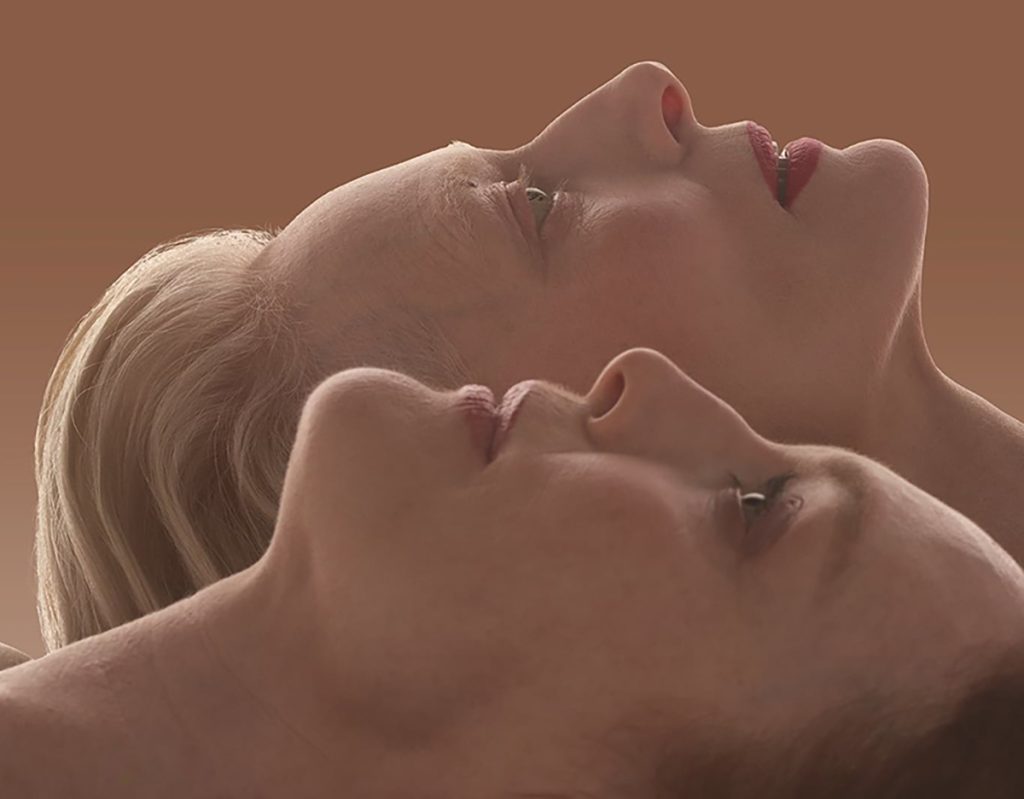
The first time I saw a film by Spanish director Pedro Almodóvar, I was probably in my early twenties; it was Todo Sobre mi Madre (All About my Mother), and I couldn’t get enough of the rawness, care, and comedy of it all. I remember thinking: This is so different from other movies I’ve seen, from the imagery portrayed, to the intricate connections explored, and the tempo with which the story moved. Fast forward in time and I’m now sitting in the Avon Cinema in Providence, Rhode Island, about to watch Pedro Almodóvar’s first feature-length film in English, The Room Next Door. It features lead actresses Julianne Moore as Ingrid and Tilda Swinton as Martha, with John Turturro playing a supporting role. I really had no idea what to expect when the movie began. All I knew was the premise: Two life-long friends (Ingrid and Martha) reconnecting when one becomes ill, described by IMDB as an “extreme but strangely sweet situation.” While the purpose of this piece is to review the movie, I want to note that the venue in which I watched it and the environment that surrounded me all came together to create this particular movie experience.
It was a cloudy weekday afternoon, and for once I was not running late! I luckily found a parking spot on busy Thayer Street, right across from the Avon Cinema and its vintage marquee. Part of the College Hill area since 1938, it has been described as Providence’s “Art House” movie theater, made up of only one screen and one concession stand, which on that day had no butter for my popcorn, “our butter man ran out!” (This happens?!). After the very nice staff member and I laughed at these circumstances, I walked in sans-butter and noticed the other patrons getting ready to watch this film,- many of them gray-haired and with a lot of enthusiastic catching up to do. Given the topic addressed in this movie, (without oversharing – because I want you to go see it!), of a friend being ill and facing mortality, I found myself wondering what my fellow movie-goers were thinking. We live in a culture, specifically in the United States, that appears to be uncomfortable with talking about getting older, let alone actually doing it., The frailty of human life, and the experiences of both being near death and losing a loved one, are not common table topics unless you yourself have suffered a loss. Even then, bereavement policies usually assume you’ll be over that in three working days – but I digress. Sitting in the dark I felt and saw the impact of the story on people’s faces and bodies. We were laughing, crying, gasping, in union. I wondered how many people in the audience had gone through a loss, if they were thinking of their loved ones (as I was), and if they were reflecting upon their own lives as well – the juxtaposition of joy, love, and grief.
I personally had a very embodied experience; Almodóvar’s film brought me in, from the very first scene (which looked and felt very similar to Todo Sobre mi Madre). We are introduced to Ingrid with a camera shot from above, surrounded by the geometric shapes depicted on the cover of her newest book, which she’s essentially written about how she doesn’t understand death. In the scene, she tells a reader, “It feels unnatural to me… I can’t accept that something alive has to die.” Martha, who is undergoing treatment for terminal cancer, is in her hospital room, which becomes the backdrop for her initial conversations with Ingrid after years apart. Early on we get the first closeup of Martha’s face… this creates a pathos for the character and the process we, in hindsight, know she will go through.
As the movie continues, two of my favorite themes emerge: intimacy (in relationships of all kinds), and our nature. The film shows the progression of two friends revealing their thoughts, feelings, and needs – and lands on how important presence is, both emotional and physical. My favorite scenes throughout involved Ingrid and Martha intertwined with each other, focused on the moments shared and the emotions that swirled around and through them. Nature then, is the setting for these friends and their journey. In nature, Martha seems to find solace and a way to further connect with Ingrid. After the friends have arrived in a spot that Martha has secured for them to stay in, she notices the birds singing, and later on in the film she wakes and asks her friend, “Can you hear them?” To me it seems in these moments that Martha is asking if Ingrid is witnessing life in the same way she is. Choosing to show the fullness of the beautiful surroundings, using birdsong, deeply green trees, and snow, allows nature to become the focal point. Another aspect of the film that struck me was the exploration of friendships and how we show up for each other.
Point of view, framing, and pacing in cinema are all so crucial, they can mean the difference between feeling removed or connected. The choices made in Pedro Almodóvar’s In the Room Next Door, inclusive of the captivating acting, with their intentionality, color, and sound, were very effective at drawing me in and making me feel the story, and hopefully you can go to the movies and give yourselves the chance to experience the same. •


